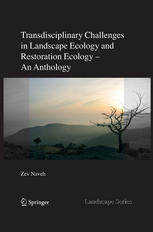

Most ebook files are in PDF format, so you can easily read them using various software such as Foxit Reader or directly on the Google Chrome browser.
Some ebook files are released by publishers in other formats such as .awz, .mobi, .epub, .fb2, etc. You may need to install specific software to read these formats on mobile/PC, such as Calibre.
Please read the tutorial at this link: https://ebookbell.com/faq
We offer FREE conversion to the popular formats you request; however, this may take some time. Therefore, right after payment, please email us, and we will try to provide the service as quickly as possible.
For some exceptional file formats or broken links (if any), please refrain from opening any disputes. Instead, email us first, and we will try to assist within a maximum of 6 hours.
EbookBell Team

5.0
70 reviewsCapitalizing on forty years of intensive ecological studies, this anthology presents a collection of widely dispersed major publications on theoretical and practical Mediterranean, global environmental and landscape issues. These range from Mediterranean ecosystems and vegetation types in California and Israel, to the significance of fire in the evolution of cultural Mediterranean landscapes in the Pleistocene and Early Holocene with special reference to Mt. Carmel; and from the development of Tanzania Masailand, a sociological and ecological challenge to multifunctional, self-organizing biosphere landscapes and the future of our Total Human Ecosystem.
Each chapter features a comprehensive study of ecological and landscape issues, synthesized in the introduction, and woven with autobiographical experiences. The concluding chapter calls for a transdisciplinary shift in all environmental scientific fields and particularly in landscape and restoration ecology, to cope with the complex, closely interwoven ecological, socio-economical, political and cultural crises facing human society during the present crucial transition from the industrial to the post-industrial, global information age.
Updating and broadening the scope of the groundbreaking Springer book on Landscape Theory and Applications by the author and Lieberman (1994), this is a unique transdisciplinary attempt based on advanced systems complexity theories, which link the natural and human sciences. It will be of value for all those dealing with land and landscape study in the broadest sense as academic scientists, researchers and scholars, professionals and practitioners and students.